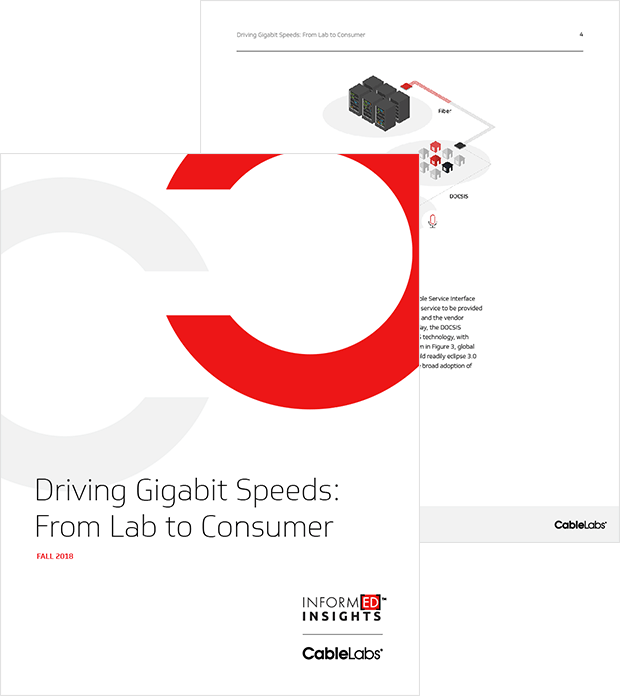FALL 2018
Driving Gigabit Speeds: From Lab to Consumer
Cable’s hybrid fiber coax networks have proved immensely scalable to meet consumer demand for ever-increasing broadband performance. Next-generation broadband performance is available today via cable networks, and cable innovation will continue to advance connectivity across the globe.
Executive Summary
Cable broadband service is typically provided over a network consisting of both optical fiber and coaxial cable – a hybrid fiber coax (HFC) network – as well as wireless connectivity. These networks are widely deployed globally and capable of providing the broadband speeds needed to stay well ahead of consumer demand today and for years to come.
Currently, the cable industry is equipping its HFC networks with the latest cable broadband technology, known as DOCSIS® 3.1, that has a path to eventually provide up to 15 gigabits per second (Gbps) of capacity and potentially more. Today, cable networks can readily support customer offerings of 1 gigabit per second (Gbps) download speeds, widely known as “gigabit service,” which has been and will continue to be deployed rapidly. As of December 2016, only 4% of U.S. housing units had cable gigabit service available. Eighteen months later, cable operators in the U.S. increased that number by 16×. Through regular surveys of its members, CableLabs estimates that as of June 2018, 63% of U.S. housing units – 74% of the U.S. cable broadband footprint – have gigabit service or better available from local cable operators. Deployment of these next-generation networks continues to advance. This rapid progress is indicative of the capability and reach of cable networks globally, and of the power of cable innovation to transform communications for its customers.
Over the past 35 years, available consumer Internet speeds have increased at roughly a 50% compound annual growth rate (CAGR). Gigabit service is just the latest step in the availability of ever-increasing speeds. CableLabs and the cable industry are continuing to advance the performance and capacity of HFC networks to ensure cable operators have the needed technologies to remain well ahead of consumer demand. CableLabs is focused on developing innovative network technologies in the areas of coax (e.g., DOCSIS 3.1), fiber (e.g., coherent optics in access), and wireless (Wi-Fi and 5G), as well as defining optimal network architectures, to provide the necessary capacity and performance in each segment of the network for today’s service offerings and those anticipated in the future.
CableLabs is working to commercialize the next enhancement of DOCSIS technology – Full Duplex (FDX) DOCSIS 3.1 (a part of DOCSIS® 4.0 technology), which will enable cable operators to provide symmetric gigabit service to their customers. To date, cable broadband service has typically provided asymmetric speeds with downloads speeds being higher than upload speeds. This asymmetry in speed has matched consumer use patterns, but as new and innovative broadband applications are developed, cable operators will soon have the technology and flexibility to provide consumers with symmetric services. At this point, CableLabs has completed the FDX DOCSIS specifications (a part of DOCSIS® 4.0 specifications) and anticipates commercial availability of conforming network equipment within the next calendar year.
Beyond work in coaxial network technologies, CableLabs is investing substantially to increase the performance of the fiber portion of the HFC network. To ensure sufficient capacity in that fiber, CableLabs is focused on adapting coherent optical transmission – technology traditionally used in long-haul and metropolitan fiber networks – for use in access networks. Coherent optic technologies have the potential to increase the per strand capacity in access networks by orders of magnitude over currently available optical access technologies. The need for additional capacity in the fiber portion of the network is being driven in large part by an evolutionary change in the access network referred to as Distributed Access Architecture, which helps enable deployment of fiber deeper into cable networks, and the offering of ever-increasing speeds to consumers. In addition, commercial services, such as mobile wireless backhaul, factor into this optical fiber evolution. Most recently, CableLabs released two new specifications for point-to-point coherent optics.
CableLabs also continues to drive advances in wireless technologies – both in and out of the home. The vast majority of consumers access their cable broadband service through a Wi-Fi connection and in turn, their ability to take full advantage of their cable broadband service directly depends on the performance of that Wi-Fi connection. To ensure the performance of Wi-Fi connectivity, CableLabs has developed protocols for Wi-Fi proactive network maintenance (Wi-Fi PNM) and global standards for Wi-Fi performance, data elements and residential Wi-Fi mesh networks. In addition, the majority of CableLabs members are also mobile network operators, and CableLabs has recently released an addition to the DOCSIS specification to enable HFC networks to more effectively provide mobile wireless backhaul services to support increased deployment of small cell architectures and, eventually, 5G.
The continued innovations of CableLabs and the cable industry have enabled cable operators to provide broadband services over HFC networks that are well ahead of consumer demand and highly comparable to the service offerings provided over fiber-to-the-home (FTTH) networks.
The continued innovations of CableLabs and the cable industry have enabled cable operators to provide broadband services over HFC networks that are well ahead of consumer demand and highly comparable to the service offerings provided over fiber-to-the-home (FTTH) networks. Cable’s HFC networks are high-capacity, efficient and future-ready to meet ever-increasing consumer demand for broadband performance.
Introduction
Cable operators have deployed vast, high-performing networks across the globe[1]. These networks offer broadband and other services through a hybrid fiber coax (HFC) network architecture. The HFC network architecture has proved remarkably scalable to meet the demand for ever-increasing broadband speeds of today and for years to come.
Cable operators are widely deploying the latest generation of cable broadband technology – DOCSIS 3.1 – enabling the widespread availability of gigabit service. CableLabs and the cable industry are focused on innovating in each segment of the network to ensure sufficient capacity is available – end-to-end – to offer the gigabit services of today and the symmetric multi-gigabit services of tomorrow. This piece in CableLabs’ Inform[ED] Insights series explains the HFC technology roadmap toward ever-increasing connectivity performance.
2. Growth in Broadband Speeds: Keeping Pace with Nielsen’s Law
Over the past 35 years, residential broadband download speeds for high-end consumers have increased at roughly a 50% compound annual growth rate (CAGR). This observation was first made by Jakob Nielsen and became known as “Nielsen’s Law of Internet Bandwidth” (or “Nielsen’s Law”)[2]. Today, we are seeing gigabit service become widely available to consumers, just the latest step in the history of ever-increasing broadband speeds[3]. Assuming the 50% CAGR continues to hold true, we can expect to see 10-Gbps service offerings by 2024, as illustrated in Figure 1 below.
The cable industry is developing technologies to enable cable broadband service providers to keep pace with this well-established historical growth rate. CableLabs is innovating and developing the necessary technologies to continue to advance the performance of cable networks to stay ahead of demand, currently and into the future. As is discussed in detail in the following sections, CableLabs’ work in areas such as Full Duplex DOCSIS 3.1 (FDX DOCSIS) technology (now DOCSIS 4.o technology), Full Duplex Coherent Optics (FDX Coherent Optics) and Distributed Access Architectures will enable the cable industry to evolve its networks to keep pace with Nielsen’s Law well into the future.
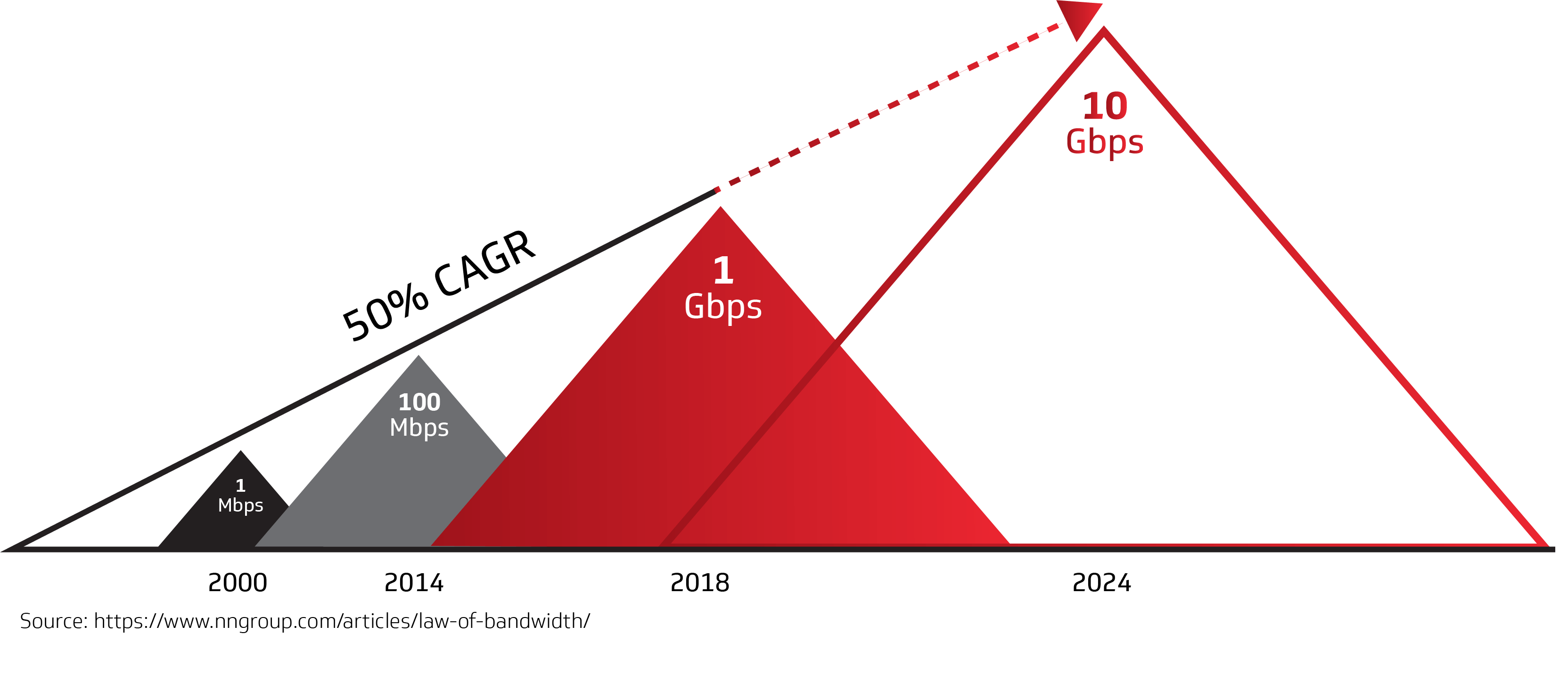 Figure 1: Historic, Current, and Future Available Broadband Speeds – Nielsen’s Law
Figure 1: Historic, Current, and Future Available Broadband Speeds – Nielsen’s Law3. Cable Broadband Service: Gigabit and Beyond
The cable industry has long demonstrated its commitment to continually improving cable broadband networks to ensure cable operators are capable of offering broadband speeds well ahead of consumer demand. To enable further advancements, the cable industry is working to develop new network technologies and approaches to provide cable operators with the ability to continue to advance broadband performance.
a. Overview of Cable’s Hybrid Fiber-Coaxial Networks
Since the early 1990s, cable operators have employed HFC networks to initially deliver television signals, and then eventually broadband and voice services. As illustrated in Figure 2, an HFC network is comprised of a fiber portion which connects a “headend” or regional hub to optical nodes. Within the headend or regional hub, the cable modem termination system (CMTS) creates the DOCSIS broadband signal, which is then transmitted over fiber to the optical nodes. For example, in North America, a typical cable operator’s network passes approximately 100-450 homes per optical node. The number of homes passed per node continues to decrease as cable operators continue to extend fiber closer to the subscriber, increasing the overall capacity available to each subscriber.
In the optical node, the DOCSIS broadband signal is transformed from an optical signal to a radio frequency (RF) signal for transmission over the coaxial network to subscriber homes. In the coaxial portion of the HFC network, one or more amplifiers may be used to extend the reach of the RF signal. Subscribers connected via coaxial cable to the same optical node port are typically referred to as a “service group,” and those subscribers necessarily share the total broadband capacity provided to that coaxial segment. Each optical node may support more than one service group. A typical service group in North America, for example, has between 50 and 200 subscribers[4]. The RF signal is then terminated in the subscriber’s home at a cable modem, which often includes an integrated Wi-Fi access point.
 Figure 2: The cable hybrid fiber coax (HFC) network
Figure 2: The cable hybrid fiber coax (HFC) networkIn 1997, CableLabs released the initial version of the Data Over Cable Service Interface Specification, or DOCSIS – the technology that enables broadband service to be provided over an HFC network. Since that time, CableLabs with its members and the vendor community, has continued to advance the DOCSIS technology. Today, the DOCSIS 3.0 specification is the most widely deployed generation of DOCSIS technology, with cable operators rapidly moving to DOCSIS 3.1 technology. As shown in Figure 3, global shipments of DOCSIS 3.1 consumer premise equipment (CPE) should readily eclipse 3.0 shipments this year, reflecting both the broad deployment and the broad adoption of DOCSIS 3.1.
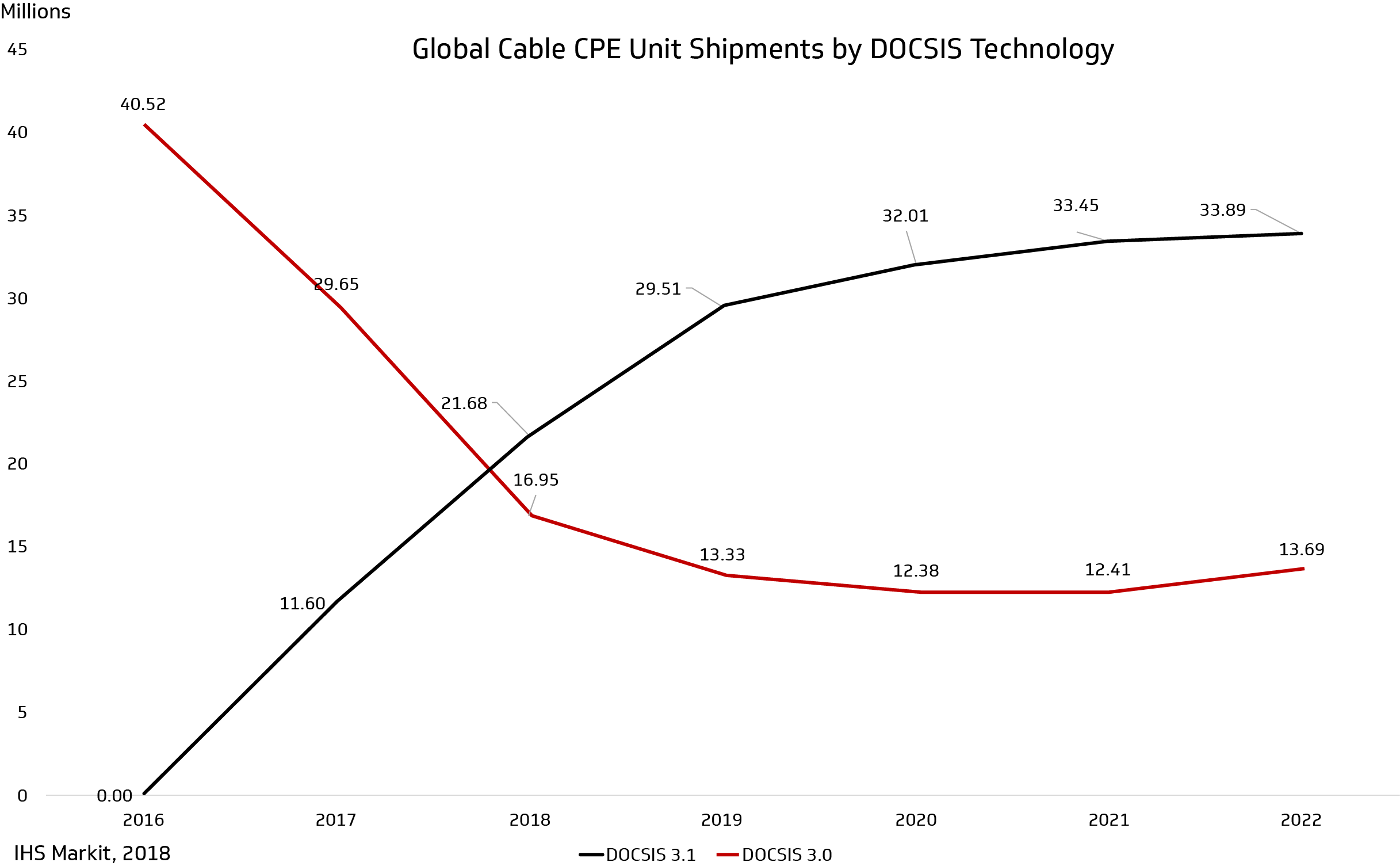 Figure 3: Global cable customer premise equipment (CPE) units shipped and projected through 2022
Figure 3: Global cable customer premise equipment (CPE) units shipped and projected through 2022b. Driving Increased Broadband Capacity: DOCSIS 3.1, Full Duplex (a part of DOCSIS 4.0 technology, and Beyond
Since 1997 and the launch of the original DOCSIS specification, the cable industry has steadily increased the capabilities of the DOCSIS technology. As summarized in Table 1, DOCSIS technology has realized major advances with each iteration. Today, the cable industry is widely deploying the latest commercially available, cable broadband technology, known as DOCSIS 3.1, that can provide up to 10 Gbps of downstream capacity and readily support consumer gigabit offerings. Moreover, the next technology enhancement – FDX DOCSIS 3.1 – will enable symmetric gigabit services and is nearing commercial availability. These advances and more will help enable emerging applications such as autonomous vehicles, immersive telework and telehealth, and redesigned education[5].
| THE EVOLUTION OF DOCSIS | DOCSIS 1.0 | DOCSIS 1.1 | DOCSIS 2.0 | DOCSIS 3.0 | DOCSIS 3.1 | DOCSIS 4.0 |
|---|---|---|---|---|---|---|
| HIGHLIGHTS | Initial cable broadband technology | Added voice over IP service | Higher upstream speed | Greatly enhanced capacity | Capacity and efficiency progression | Symmetrical streaming and increased upload speeds |
| MAX DOWNSTREAM CAPACITY | 40 Mbps | 40 Mbps | 40 Mbps | 1 Gbps | 10 Gbps | 10 Gbps |
| MAX UPSTREAM CAPACITY | 10 Mbps | 10 Mbps | 30 Mbps | 100 Mbps | 1-2 Gbps | 6 Gbps |
| INITIAL SPECIFICATION DATE | 1997 | 1999 | 2001 | 2006 | 2013 | 2019 |
The performance numbers above are based on specifications; deployed network performance will vary across implementations.
i. DOCSIS 3.1
With DOCSIS 3.1 technology, cable operators can readily offer consumers gigabit services. In 2013, CableLabs completed and released the DOCSIS 3.1 specification, and by early 2016, equipment vendors began producing and shipping conforming network equipment – cable modems and CMTSs. With the commercial availability of equipment, cable operators began to rapidly deploy 3.1, enabling widespread availability of gigabit service. By late 2017, many cable operators began completing their transition to DOCSIS 3.1 technology[6]. As of June 2018, cable gigabit service was available to over 63% of all U.S. housing units, up from 4% just 18 months earlier, as shown in Figure 4 below[7].
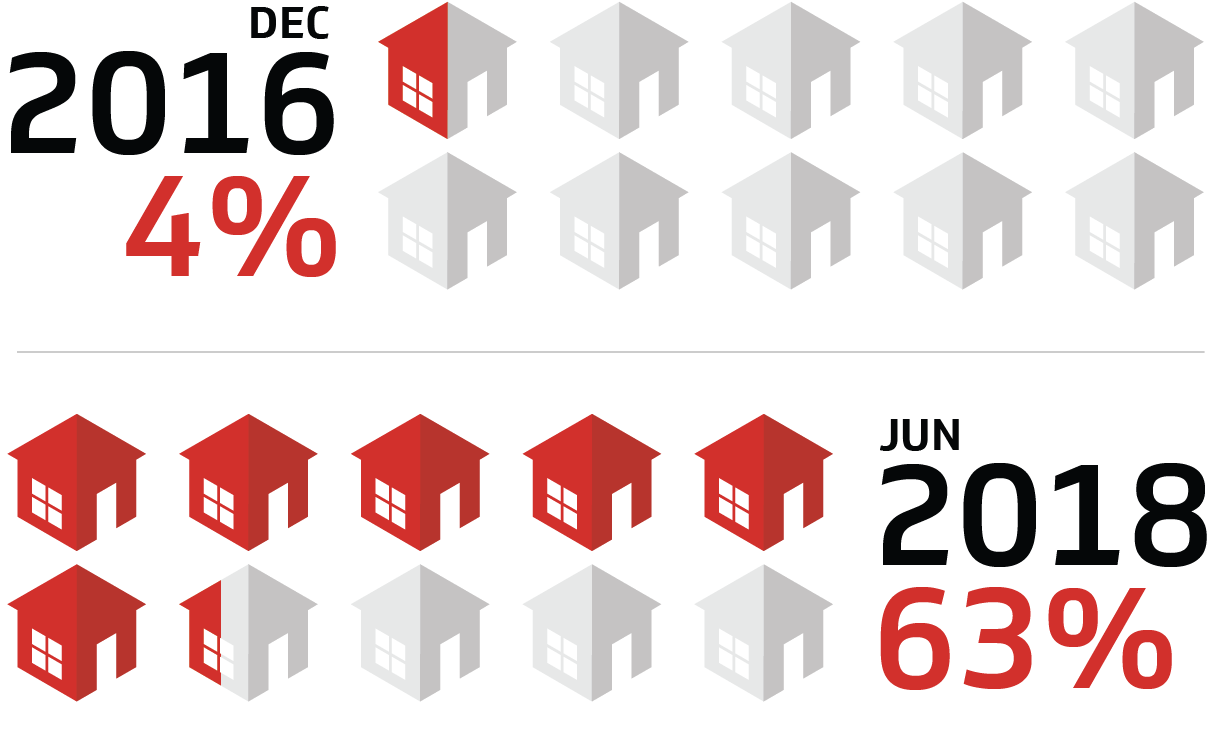 Figure 4: Cable Gigabit Service Availability in the United States
Figure 4: Cable Gigabit Service Availability in the United StatesDOCSIS 3.1 technology provides significant advancements over the prior DOCSIS 3.0 technology, as summarized in Table 1, above. Most notably, the maximum downstream capacity increased dramatically from 1 Gbps to 10 Gbps, with the potential to increase to 15 Gbps. The increased capacity and other performance enhancements in DOCSIS 3.1 were enabled through the following key advancements:
- Increased Spectral Efficiency: With DOCSIS 3.1 specifications, orthogonal frequency division multiplexing (OFDM) and more sophisticated forward error correction were adopted enabling significantly higher orders of modulation and in turn the ability to carry significantly more data per unit of spectrum.
- Additional Available Spectrum: DOCSIS 3.1 specifications also increased the allowance for spectrum use, making the total potential spectrum available for broadband service greater. Currently, the DOCSIS 3.1 specification provides up to 1.2 GHz of spectrum for broadband data transmissions, with the option of extending that to 1.8 GHz.
- Reduced Latency: The DOCSIS 3.1 specification defined a new technology known as Active Queue Management (AQM) to reduce and better control the amount of time – latency – required for data to move through the cable broadband network. The largest source of latency is typically the buffers in network equipment such as cable modems and CMTSs. AQM allows the cable modem and CMTS to track how full their buffers are, and, when detecting the Transmission Control Protocol (TCP) has filled the buffer, can intelligently drop just enough packets to signal TCP to slow until an appropriate buffer level is restored, reducing latency for the end user. TCP, which is the most widely used content delivery protocol today, uses algorithms that simply send more and more packets before backing off when it detects packets are being dropped by a bottleneck in the link. The effect of this is that buffers are frequently at capacity. AQM solves this bottleneck preemptively by detecting when the buffer’s “standing queue” is nearing full and signaling the need to slow down before packets are dropped and service is affected[8].
- Increased Security: The DOCSIS 3.1 specification requires that packets carrying subscriber traffic are capable of being encrypted using asymmetric and symmetric keying algorithms between the cable modem and the CMTS. In addition, cable modems are authenticated using a public key infrastructure (PKI) digital signature.
- DOCSIS 3.0 Compatibility: DOCSIS 3.1 specifications require compatibility with DOCSIS 3.0 technology, enabling cable operators to more easily and more smoothly transition to DOCSIS 3.1 devices, minimizing consumer disruption.
ii. Full Duplex DOCSIS 3.1 (a part of DOCSIS 4.0 technology)
Full Duplex DOCSIS 3.1 technology (a part of DOCSIS 4.0 technology) builds on the fundamental advancements made with DOCSIS 3.1 to enable symmetric gigabit services. DOCSIS 4.0 technology has the potential to enable symmetric capacity of up to 10 Gbps in the downstream and up to 6 Gbps upstream directions. Today, cable networks use frequency division duplexing to provide downstream and upstream transmissions simultaneously. Lower frequencies, typically from 5 MHz to 42 MHz, are used for upstream transmission and higher frequencies are used for downstream transmission. This limited spectrum for upstream transmissions fundamentally limits upstream data rates. With the FDX DOCSIS technology, frequency division duplexing is eliminated and the entire available spectrum (up to 1.8 GHz) may potentially be used for upstream and downstream transmissions simultaneously, enabling the provision of symmetric gigabit and multi-gigabit services.
FDX DOCSIS technology (a part of DOCSIS 4.0 technology) is accomplished through intelligent transceiver design that enables interference cancellation by utilizing knowledge about transmissions to subtract noise from the signal. Since the transceiver knows what it is transmitting, FDX DOCSIS equipment uses that information to process out the noise and recover the intended received signal.
In October 2017, CableLabs released the initial FDX DOCSIS specification[9]. Currently, vendors are developing conforming network equipment[10]. CableLabs is working closely with the vendor community and has a number of interoperability testing events scheduled over the coming months, a significant step toward commercial availability of conforming equipment. The first commercially available FDX DOCSIS equipment is anticipated in 2019.
iii. The Future of DOCSIS: Beyond DOCSIS 3.1 and Full Duplex DOCSIS
The HFC network has proved remarkably capable in delivering continually improving broadband speeds. CableLabs and the cable industry anticipate further expanding the capacity and capability of HFC networks to keep pace with Nielsen’s Law for years to come. The most straightforward path to further increase the data carrying capacity of the coaxial network is to utilize increased spectrum on the coaxial cable. Specifically, the current DOCSIS 3.1 specification already provides for the option to use spectrum up to 1.8 GHz. The additional 600 MHz of available spectrum, above 1.2 GHz, should increase top-line capacity to roughly 15 Gbps, as illustrated below in Figure 5. To access the full capacity enabled by these higher frequencies, cable operators will need to continue to evolve their networks through, for example, the deployment of distributed access architectures and additional fiber deeper into their networks, as discussed in more detail in section 3(d) (below).
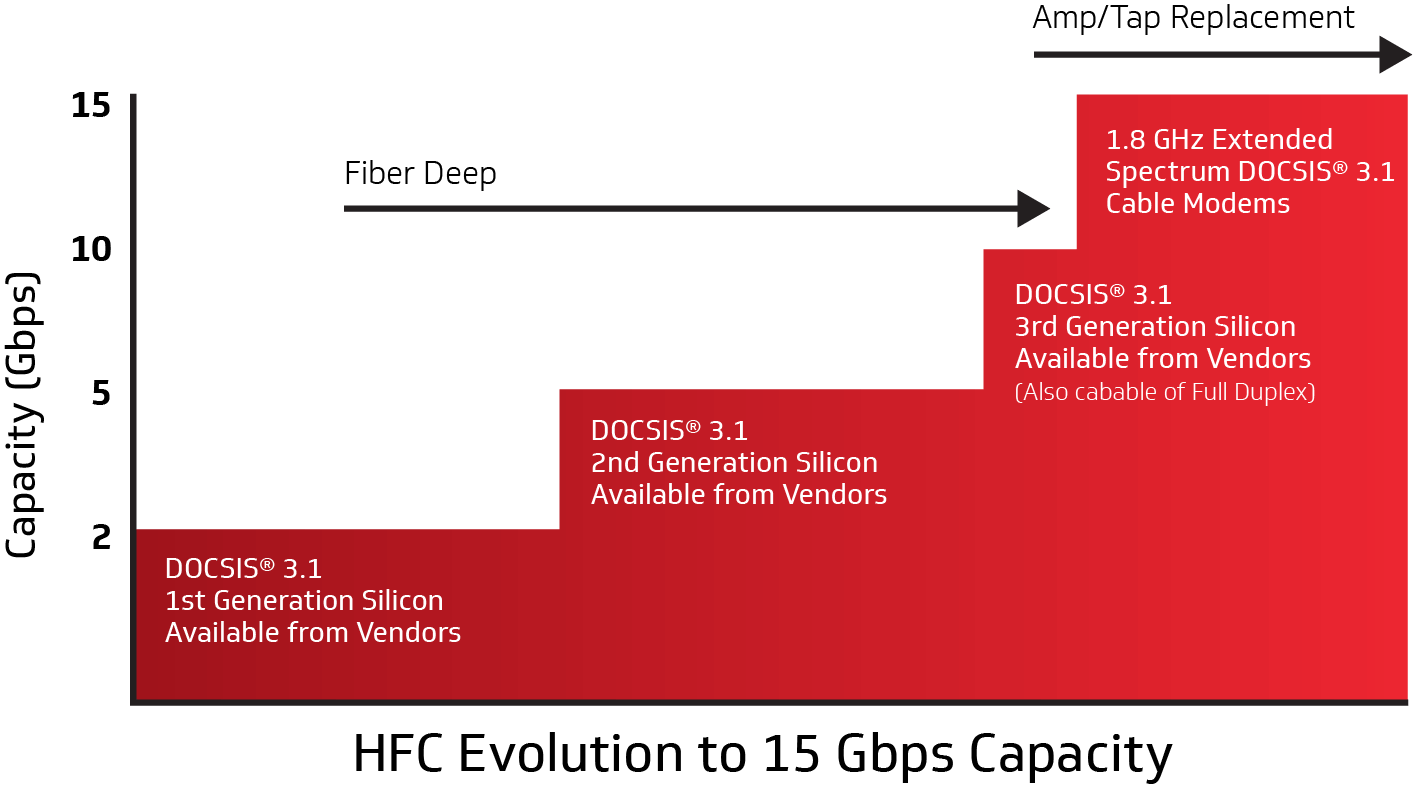 Figure 5: Evolving HFC capacity to 15 Gbps
Figure 5: Evolving HFC capacity to 15 GbpsOne path to reaching capacities beyond 15 Gbps is to expand data transmission to frequencies above 1.8 GHz. The coaxial network is capable of carrying frequencies above 1.8 GHz; However, at these higher frequencies, signal attenuation and other challenges become much more prominent. Overcoming these challenges likely requires additional network architecture changes, such as deploying fiber even deeper and upgrading network components to handle these higher frequencies. At least theoretically, if the spectrum is expanded beyond the currently specified 1.8 GHz, the coaxial network could have a topline capacity above 15 Gbps, symmetric using full duplex techniques. Given the attenuation and other challenges associated with these higher frequencies, the increases in data-carrying capacity is likely nonlinear with diminishing returns at the higher frequencies.
c. Increasing Fiber Capacity: Coherent Optics
As the cable industry continues to advance DOCSIS technology and the data-carrying capacity of the coaxial network, the existing fiber network must also expand to support delivering higher broadband speeds to consumers as well as support for anticipated increases in demand for commercial services, such as mobile wireless backhaul. To address this challenge CableLabs and the cable industry have invested significantly in developing new technologies to increase the capacity of the fiber portion of the HFC network. Specifically, we have focused on bringing long-haul fiber technologies – coherent optics – to the access network.
Adapting coherent optics technology to the access network will enable the transmission of more data, in orders of magnitude, over cable operators’ existing fiber networks. With coherent optics, cable operators will be able to provide the necessary capacity for future broadband speeds while avoiding the expensive and disruptive process of having to retrench and pull additional strands of fiber along existing fiber routes. In addition to enabling higher broadband speed offerings in the future, coherent optics will also provide the additional capacity, and in turn flexibility, to support backhaul for next-generation wireless technologies, such as 5G, and other business services. Table 2, below, compares the performance capabilities across optical technologies in the access network.
| OPTICAL TECHNOLOGIES IN ACCESS NETWORKS | ANALOG | DIGITAL-DIRECT DETECT (10 GBPS) | CABLELABS DIGITAL-COHERENT | CABLELABS FULL DUPLEX COHERENT |
|---|---|---|---|---|
| DESCRIPTION | Modulates a continuous signal | On-Off Keying: Rapidly cycles the laser "on" and "off" to transmit data | Modulates amplitude and phase along two polarizations to transmit data | Using coherent techniques, enables data to be transmitted in both directions, simultaneously, using the same wavelength on a single fiber strand |
| CAPACITY PER WAVELENGTH | 10 Gbps | 10 Gbps | 700 Gbps* | 700 Gbps (in each direction) |
| TYPICAL NUMBER OF WAVELENGTHS USED | 4 | 40 | 80 | 80 (in each direction) |
| TOTAL CAPACITY PER FIBER STRAND | 40 Gbps | 400 Gbps | 50 Tbps | 100 Tbps (combined capacity for both directions) |
| PRODUCTION DATE | Early 1990s | 2002 | 2018 | 2018 (anticipated by end of year) |
*CableLabs has demonstrated data transmission rates of up to 700 Gbps per wavelength under lab conditions. However, we expect initial field deployments to achieve data transmission rates, more on the order of 100-400 Gbps per wavelength.
i. Coherent Optics
Coherent optics is a method of modulating the optical signal to achieve far greater data-carrying capacity than the optical technology commonly employed today in cable networks. Digital direct-detect optical technology typically uses a technique known as on-off keying (OOK) whereby the transmitter transmits data by rapidly turning the laser on and off. In comparison, a coherent optics transmission modulates the amplitude and phase of the light sent through the fiber and sends the signal across two polarizations, as illustrated in Figure 6 below. Modulating across these multiple dimensions and polarizations enables an up to 70× increase in data-carrying capacity per unit of spectrum in comparison to digital optics, as summarized above in Table 2.
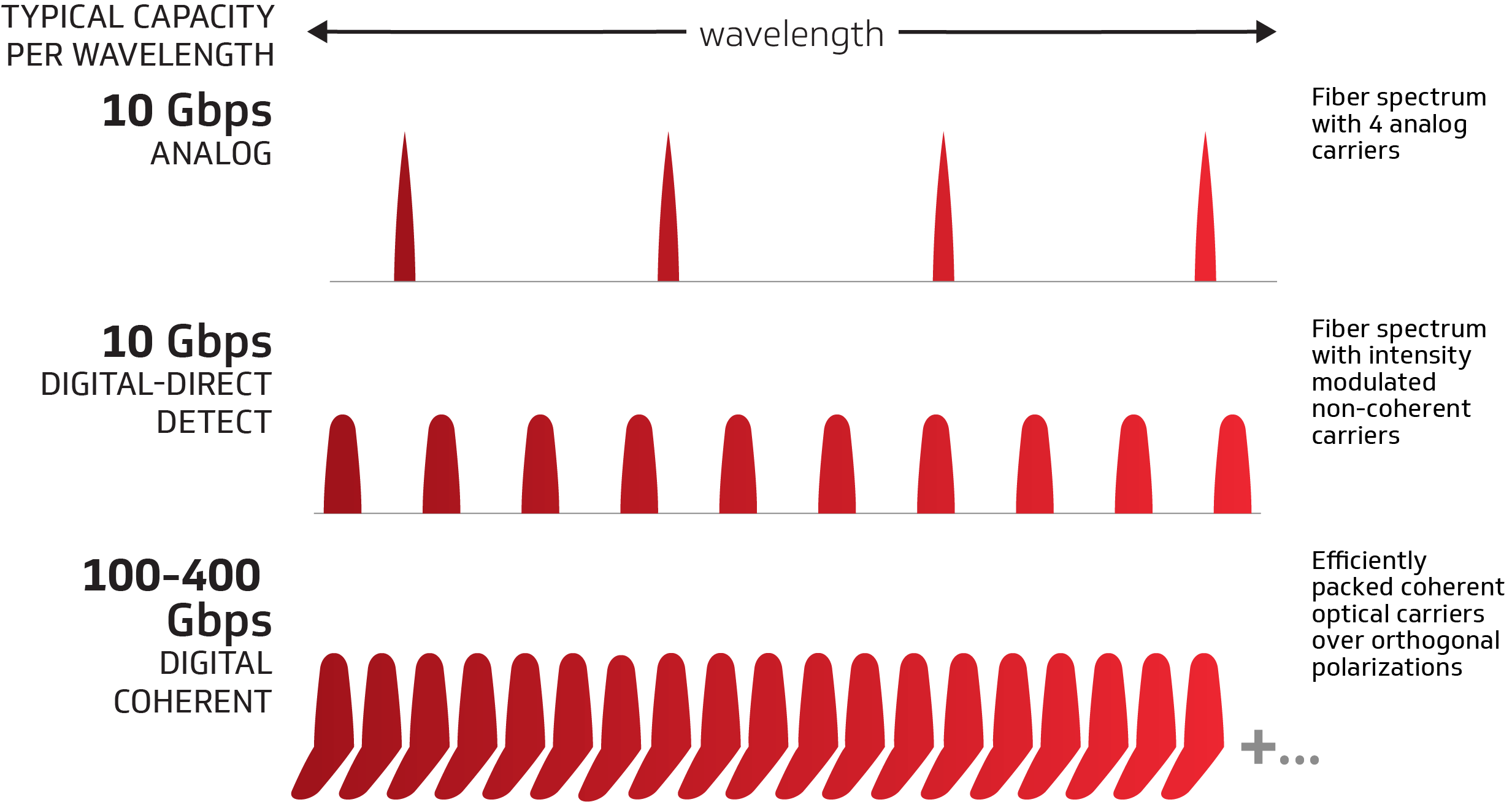 Figure 6: Comparison of optical modulation techniques in the access network
Figure 6: Comparison of optical modulation techniques in the access networkCoherent optics is not new technology – it has been used for years in the long-haul and metropolitan fiber applications. However, until recently, the costs associated with coherent optics have been prohibitive for deployment in access networks. CableLabs has adapted long-haul coherent optics technology for use in short-haul access networks and simplified it to reduce the cost.
On June 29, 2018, CableLabs publicly released two new specifications for Coherent Optics: Point-to-Point (“P2P”) Coherent Optics Architecture Specification and P2P Coherent Optics Physical Layer v1.0 Specification. The goal in developing these specifications is to reduce the cost of coherent technologies to enable deployment in access networks. To achieve this goal, the specifications focus on:
- Defining the minimum feature set necessary for an access network application, reducing complexity and, therefore cost.
- Ensuring interoperability, which increases competition and scale, thereby also reducing cost.
Vendors are actively developing conforming equipment. CableLabs anticipate interoperability events as vendors push to make conforming equipment available in the near future.
ii. Full Duplex Coherent Optics
Today, based on a recent survey of cable operators in North America and Europe, roughly 20 percent of existing cable networks use a single fiber topology, meaning that upstream and downstream transmissions across the link share the same fiber. The cable industry expects this proportion to climb to 60 percent over the next 5 years. To address this challenge and to ensure the benefits of coherent optics are widely applicable, CableLabs is currently developing “Full Duplex” coherent optics technology which will enable the transmission of data in both directions simultaneously over the same wavelength over the same strand of fiber, effectively further doubling the capacity of a single strand of fiber.
To enable Full Duplex (FDX) Coherent Optics, a special optical component called an optical circulator, is required to directionally duplex the bi-directional coherent signals. With this new dimension of direction-division multiplexing (DDM) in the optical domain, any coherent wavelength can be used twice, once in each direction, thus doubling the whole fiber system capacity. This full duplex implementation is not wavelength-selective. It works for short and long wavelengths and covers the entire fiber transmission window.
FDX Coherent Optics technology is currently being integrated into CableLabs’ recently released specifications for point-to-point coherent optics[11]. The release of the integrated specs, incorporating FDX Coherent is anticipated before the end of the year.
d. Increasing Network Capacity by Deploying Distributed Access Architectures and “Fiber Deep”
In concert with the advances in DOCSIS and fiber technologies described above, cable operators continue to evolve their networks to drive further increases in capacity and network performance. In particular, cable operators are moving toward distributed access architectures (DAA) and the deployment of fiber closer to the subscriber (i.e., “fiber deep”).
i. Distributed Access Architectures (DAA)
A distributed access architecture in an HFC network moves some or all of the network functionality from the regional hub or headend to the optical node or other similar remote location. By moving network functionality to the optical node, a distributed HFC architecture decouples the transmission technology in the fiber portion of the network from that used in coaxial cable portion, enabling cable operators to transition from analog optics to digital optics. This enables cable operators to deploy lower cost and higher capacity optical Ethernet transport technologies in the fiber portion of their networks. This architecture also creates new flexibility for operators to customize their networks to consumer’s current and future needs by allowing technology-agnostic access possibilities from the consumer to the optical node. An operator with a distributed access architecture network has the flexibility to continue to leverage the coax network and from the same optical node, deploy fiber to the home or premise (i.e., point-to-point or point-to-multipoint) and more easily support deployment of wireless technologies (e.g., 5G, small cell, or mmWave), as illustrated in Figure 7 below.
A distributed access architecture also provides substantial benefit to the continued use of the coax network. With a distributed architecture, the radio frequency signal (e.g., the OFDM carriers) is no longer originated at the regional hub, but rather at the optical node, much closer to the subscriber, and therefore, reducing distortion (or “noise”) in those signals and enabling the full functionality and capacity of the DOCSIS technologies, described above. This also helps enable future spectrum expansion (e.g., higher frequencies) on the coax network.
Network equipment supporting distributed access architectures is available and being deployed today. In 2015, CableLabs released the first versions of a family of specifications and technical reports defining the Remote PHY technology, one of the leading distributed architecture options. Remote PHY allows for a cable headend (integrated CCAP) to be separated into two components – a media access control (MAC) component that stays in the headend, and a physical layer component that resides in a remote node[12]. An alternative DAA solution, Remote MACPHY, allows for both the MAC and the physical layer to reside in a remote node. DAA network equipment is commercially available today, using both CableLabs specifications as well as proprietary DAA solutions, and cable operators are deploying DAA solutions to take advantage of the many associated benefits[13]. For example, Comcast is expecting to deploy DAA – Remote PHY – at “scale” by the end of 2018[14].
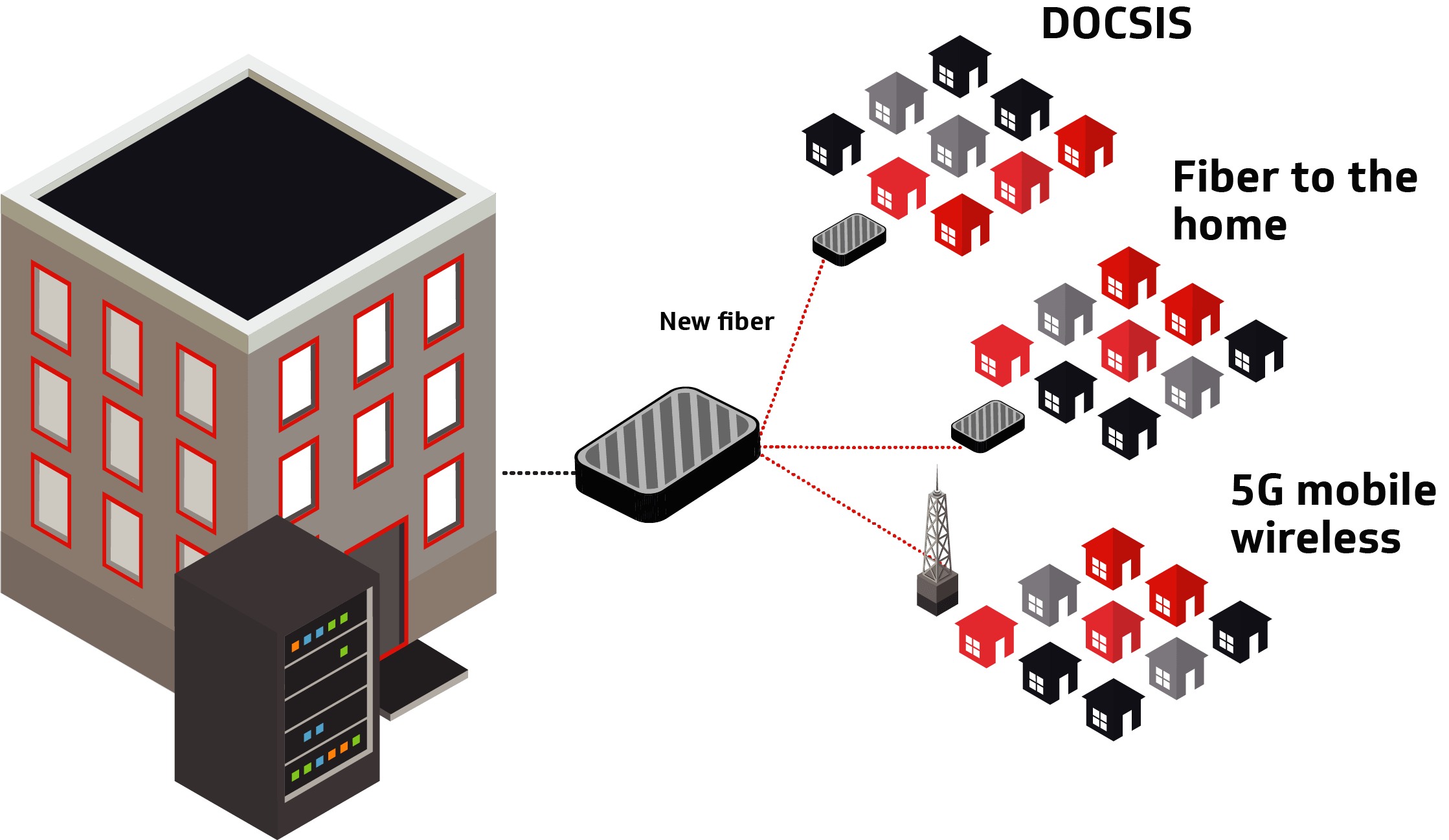 Figure 7: Distributed access architectures provide increased network flexibility
Figure 7: Distributed access architectures provide increased network flexibilityii. Fiber Deep
A fiber deep strategy increases the broadband capacity available to each subscriber by reducing the number of subscribers in the “service group” that share the available broadband capacity provided through the coaxial portion of the network. Deploying fiber deep is the process of extending the fiber portion of the network beyond the existing optical node and adding additional optical nodes. This results in multiple smaller coaxial networks that now each serve fewer subscribers, as illustrated above in Figure 7.
By dividing the existing coaxial network into smaller service groups, which also typically results in shorter coaxial runs, fiber deep often eliminates (or substantially reduces) the need for radio frequency (RF) amplifiers in the coaxial network. RF amplifiers enable the signal to travel longer distances over the coaxial network, but typically introduce and/or increase signal distortion (or “noise”) that impairs the data-carrying capacity of the signal. Moreover, current amplifier technologies are incompatible with FDX DOCSIS technology. DAA solutions, and the elimination of RF amplifiers, are one option for the deployment of FDX DOCSIS technology. CableLabs is also working to develop techniques that would enable full duplex transmissions over coax networks that include RF amplifiers.
Cable operators have long been working to deploy fiber deeper into neighborhoods to provide increased capacity. A fiber deep strategy in combination with the deployment of DAA solutions, such as Remote PHY or Remote MACPHY, helps ensure sufficient capacity is available in the HFC network today and in the future.
e. Wireless Innovation: Enabling Consumers to Fully Access Cable Broadband Speeds and Supporting the Densification of Mobile Networks
CableLabs and the cable industry are committed to advancing wireless technologies in and out of the home. In the home, the vast majority of consumers and their devices access their cable broadband service and the broader Internet through a wireless connection – Wi-Fi. Ensuring the performance of that Wi-Fi connection is critical to the consumers’ broadband experience. Moreover, for many cable operators, the single most significant source of customer care calls is Wi-Fi connectivity troubles. At the same time, Wi-Fi challenges only grow – consumers are attempting to access ever increasing broadband speeds, the number and diversity of Wi-Fi connected devices in the home is only increasing, and housing trends are toward larger and larger homes[15]. CableLabs and the cable industry are advancing in-home Wi-Fi connectivity[16]. Most notably, CableLabs is working within the Wi-Fi Alliance – the global “Wi-Fi” specification and certification organization – to drive advances in Wi-Fi performance, including “Wi-Fi EasyMesh” and the standardization of Wi-Fi performance metrics[17]. These contributions enhance the performance of Wi-Fi for many users beyond cable. In addition, CableLabs contributes its technology research to regulators in the realm of wireless spectrum policy, helping to grow the bandwidth available for wireless and further enhancing connectivity for all.
Beyond the home, CableLabs and the cable industry are investing in technologies to support the continued advancement of mobile wireless technologies, including advancements in support of 5G, and of Wi-Fi in public, high-usage locations. Specifically, CableLabs is revising DOCSIS to more effectively support mobile wireless backhaul services and the increased deployment of small cell architectures in LTE and eventually 5G networks. As mobile networks shift to small cell architectures, backhaul connectivity becomes an increasing challenge. CableLabs is working to ensure HFC networks are ready to meet this challenge and provide the needed backhaul connectivity[18]. In addition, CableLabs contributed substantially to the recently announced carrier-grade Wi-Fi standard, Wi-Fi CERTIFIED Vantage, that provides improved Wi-Fi performance in high-usage environments such as stadiums and airports[19].
Today, cable networks can readily support customer offerings of 1 gigabit per second (Gbps) download speeds, widely known as “gigabit service”, which has been deployed rapidly.
i. Wi-Fi EasyMesh™ and Multi-Access Point Home Networks
CableLabs has worked with the Wi-Fi Alliance to develop an interoperability specification for multiple Wi-Fi access points (APs) in the home and an associated certification program – “Wi-Fi EasyMesh.”[20] The specification defines how the APs communicate with each other, enabling coordination between APs to optimize performance and load balance across the APs. The specification includes easy setup with automatic device onboarding and configuration. Moreover, through standardization of interoperability, customers are free to add APs to their wireless network from multiple vendors. Through its work on Wi-Fi EasyMesh, CableLabs and the cable industry have sought to address the need for extended, uniform, and robust Wi-Fi coverage throughout the home.[21]
ii. Wi-Fi Proactive Network Maintenance (PNM)
To further bolster the reliability and performance of Wi-Fi connectivity, CableLabs is developing a proactive network maintenance (PNM) approach for Wi-Fi[22] . PNM goes beyond predictive or preventive network maintenance and proactively monitors the network for signs of impending failures. PNM works to detect and remediate problems before those problems become evident to users. The foundation of Wi-Fi PNM is CableLabs’ work within the Wi-Fi Alliance to define and standardize the key performance indicators (KPIs) of a Wi-Fi network – known as “Wi-Fi Data Elements.”[23] Through a field trial, CableLabs has already been able to demonstrate the ability of Wi-Fi PNM to identify issues remotely, such as poor coverage and time-based channel degradation. The standardization of Wi-Fi Data Elements will enable Wi-Fi PNM to work across AP vendors and avoid lock-in with proprietary approaches.
iii. Mobile Wireless Backhaul Services
CableLabs recently announced the release of a DOCSIS mobile synchronization specification as a first step to further enable use of HFC networks for mobile backhaul services.[24] To meet the explosive growth of mobile use, mobile network operators (MNOs) are, in significant part, seeking to densify their networks through the deployment of small cell architectures.[25] Through densification, MNOs are able to more efficiently re-use available spectrum. However, each small cell requires a reliable backhaul connection. Given their wide, nearly ubiquitous deployment and ability to supply power, HFC networks are well situated to provide the necessary backhaul for LTE small cells as well as the backhaul for future 5G deployments. While HFC networks are traditionally used to provide residential broadband service, with minor technical adjustments, they are also well situated to provide backhaul connections deep into the network. For HFC networks to provide mobile backhaul, they must provide the necessary capacity, latency and synchronization. As discussed above, cable has addressed the need for additional capacity in the HFC network and is diligently working to address the latency and synchronization requirements to readily support backhaul services. To further support these efforts, CableLabs is also establishing a Mobile Backhaul Lab to prove out DOCSIS mobile backhaul technologies.[26]
iv. Small Cell-Wireline Convergence
Beyond the challenge of mobile synchronization, CableLabs is also working to ensure the compatibility of the cable network and mobile small cells. Attaching a small cell to the HFC network creates new challenges relating to radio frequency compatibility, power usage, network capacity and facilities resiliency. CableLabs is working with the cable operators and vendor community to address these challenges through the development of guidelines for the attachment of small cells to the HFC network.
v. Carrier Grade Wi-Fi
CableLabs has long worked with members and vendors to improve the RF performance of Wi-Fi equipment – Carrier Grade Wi-Fi. Late last year, the Wi-Fi Alliance announced a new certification designation, Wi-Fi CERTIFIED Vantage, which represents a significant step for the industry and a culmination of years of collaboration within the Wi-Fi ecosystem to incorporate Carrier Grade Wi-Fi performance criteria into the Vantage certification.[27] Wi-Fi Vantage devices will provide improved performance in Wi-Fi networks to ensure high-quality connectivity, particularly in high-usage environments such as stadiums, airports, offices and campuses. In addition, Wi-Fi Vantage provides a mechanism to deliver enhanced mobility and roaming across Wi-Fi networks, comparable to the reliability and functionality of mobile networks. CableLabs contributed significantly to the Wi-Fi Vantage certification through the development of RF performance criteria and strong collaboration with the broader Wi-Fi ecosystem.[28]
vi. Spectrum Policy & Spectrum Sharing
Spectrum availability is the fuel for the continued growth of wireless, and a necessary complement to the technical advances driven by industry. This is becoming more important as wireless use grows, putting increased pressure on the scarce spectrum resources available today.[29] Progress on enabling availability of additional spectrum requires technical acumen, particularly in an environment of scarcity where different services and technologies are sharing spectrum. CableLabs has applied its expertise to spectrum sharing and spectrum policy, enabling additional spectrum for the growing demand in Wi-Fi and mobile services. In recent years, CableLabs and the broader industry have supported increasing available spectrum in the 5 GHz and 3.5 GHz frequency bands, home to important Wi-Fi and mobile technologies. CableLabs has also been instrumental in pioneering coexistence between mobile and Wi-Fi technologies to enable the growth of new services for consumers.[30] These efforts and others help to increase the spectrum available for wireless communications, providing the space for new technological innovation.
4. Comparison of Cable Broadband (HFC) Networks to Fiber-to-the-Home (FTTH) Networks
Cable broadband service using DOCSIS 3.1 technology and provided over an HFC network is comparable to the broadband service delivered over current fiber-to-the-home (FTTH) network technology. The most significant difference – the ability to provide symmetric speeds – is on the verge of elimination. In this section, we compare network performance in terms of capacity and latency between HFC networks using DOCSIS 3.1 and FDX DOCSIS technologies and FTTH networks using 10G-PON technologies.[31]
At a high a level, HFC and FTTH networks use similar network architectures. Both HFC and FTTH (passive optical networks – “PON”) networks are shared, point-to-multipoint (P2MP) networks, as illustrated below in Figure 8. In both cases, there is a single downstream transmitter and multiple access termination devices that simultaneously receive and demodulate the same downstream signal. A key characteristic with point-to-multipoint networks is the peak capacity of the network is shared between all connected endpoints. We now turn to a comparison of capacity and latency between these networks.
 Figure 8: Comparison between HFC and FTTH (PON) access network architectures
Figure 8: Comparison between HFC and FTTH (PON) access network architecturesa. Capacity
The data transmission capacity of HFC networks using DOCSIS technologies exceeds that provided by the most widely deployed FTTH technology – GPON – and is equal to that of the next generation 10G-PON technologies, such as XGS-PON and 10G-EPON.[32] As detailed above, FDX DOCSIS technology will provide 10 Gbps of capacity in both downstream and upstream and has a path to eventually provide 15 Gbps of capacity in both directions. In comparison, GPON networks have a data transmission capacity of 2.4 Gbps downstream and 1.2 Gbps upstream.[33] With 10G-EPON, the data transmission capacity increases capacity to 10 Gbps in both downstream and upstream.[34] A comparison of available capacities across access network technologies is provided in Table 3.
As cable operators transition to DAA and fiber deep, the number of subscribers sharing the available capacity is also becoming more comparable. Historically, the capacity available through DOCSIS networks was typically shared by up to 500 subscribers. As cable operators move toward DAA and fiber deep, the DOCSIS network capacity will be shared by far fewer subscribers. In comparison, FTTH networks typically share available capacity with up to 32 or 64 subscribers. With the cable networks trending toward substantially smaller service groups, HFC networks are becoming comparable to FTTH deployments along this dimension as well.
With similar available capacity and a similar number of subscribers sharing that capacity, cable operators are well positioned to offer similar broadband speeds to those offered by FTTH providers.
| NETWORK TECHNOLOGY | CAPACITY |
|---|---|
| HFC - DOCSIS 3.1 | 10 Gbps downstream; 1-2 Gbps upstream |
| HFC - FDX DOCSIS 3.1 | 10 Gbps downstream; 10 Gbps upstream |
| FTTH - GPON | 2.4 Gbps downstream; 1.2 Gbps upstream |
| FTTH - 10G PON (XGS-PON & 10G-EPON) | 10 Gbps downstream; 10 Gbps upstream; or 10 Gbps downstream; 1 Gbps upstream |
b. Latency
While network capacity or “speed” is often the primary measure of network performance, it is not the only factor that influences the user experience. Latency – the time between transmission and receipt – can also determine how users perceive broadband service. Moreover, for real-time applications, such as video conferencing, gaming, and real-time control of cyber-physical systems, latency of the network can be the determinative factor in the performance of these applications.
Media access control (MAC) protocols are necessary in both HFC and FTTH networks, since both are shared networks. Accordingly, user data transmissions must be scheduled in both HFC and FTTH networks, which occurs in near real-time. This MAC scheduling does introduce some latency, with the specific impact dependent on the protocol and the number of connected endpoints. With respect to local network architecture, differences do exist from network to network, but these do not vary strictly as a function of technology.
Therefore, HFC and FTTH networks are technologically equivalent as it pertains to latency, and differences between networks are more likely to be driven by factors that are not reliant on the choice of physical medium. Latency parity potential between HFC and FTTH is seen, for example, in the FCC’s Measuring Broadband America program. The top-performing cable and FTTH networks have average round-trip latencies of about 15 milliseconds.[35]
5. Conclusion
Cable’s HFC networks are widely deployed across the globe and are capable of providing the broadband speeds needed to stay well ahead of consumer demand today and for years to come. Currently, the cable industry is making available the latest cable broadband technology, known as DOCSIS 3.1, that supports gigabit broadband services today and has a path to eventually provide 15 Gbps or more of capacity over the HFC network.
CableLabs and the cable industry are focused on innovating in each segment of the network to ensure sufficient capacity is available – end-to-end – to offer and provide the gigabit services of today and the symmetric multi-gigabit services of tomorrow.
Appendix A: Glossary of Terms
Active Queue Management (AQM)
AQM schemes attempt to maintain low queue occupancy (within Downstream and Upstream service flows) while supporting the ability to absorb a momentary traffic burst.
Cable Modem Termination System (CMTS)
Cable modem termination system, located at the cable television system headend or distribution hub, provides complementary functionality to the cable modems to enable data connectivity to a wide-area network.
Data-Over-Cable Service Interface Specification (DOCSIS®)
DOCSIS is the international standard interface that enables the provision of broadband services over the HFC network.
Distributed Access Architecture (DAA)
Distributed access architecture is a network architecture configuration that moves some or all of the network functionality from the regional hub or headend to the optical node or other similar remote location.
Distribution Hub
A location in a cable network which performs the functions of a headend for customers in its immediate area, and which receives some or all of its video programming from a Master headend in the same metropolitan or regional area.
Fiber Deep
The network configuration where network operators deploy fiber cables deeper into the access network, bringing fiber closer to subscribers.
Full Duplex DOCSIS® Technology (Now DOCSIS® 4.0 Technology)
An extension of the DOCSIS 3.1 specification that is targeted at significantly increasing upstream capacity by using the spectrum currently used for downstream transmission for simultaneous upstream and downstream communications via full duplex communications.
Headend
A central facility that is used for receiving, processing, and combining broadcast, narrowcast, broadband and other signals to be carried on a cable network.
Hybrid Fiber Coaxial (HFC)
A broadband bidirectional shared-media transmission system or network architecture using optical fibers between the headend and optical nodes, and coaxial cable distribution from the optical nodes to the subscriber locations.
Media Access Control (MAC)
Used to refer to the OSI Layer 2 element of the system which would include DOCSIS framing and signaling.
Optical Node
The optical-to-electrical (RF) interface between a fiber optic cable and the coaxial cable distribution network.
Proactive Network Maintenance (PNM)
The process and mechanism of measuring and assessing network conditions of the network to determine error or fault conditions before becoming service-impacting.
Physical Layer (PHY)
Layer 1 in the Open System Interconnection (OSI) architecture; the layer that provides services to transmit bits or groups of bits over a transmission link between open systems and which entails optical, electrical, mechanical and handshaking procedures.
Remote PHY Device
The Remote PHY Device contains mainly PHY related circuitry, such as downstream QAM modulators, upstream QAM demodulators, and pseudowire logic to connect to the CCAP Core. Together, the CCAP Core and the Remote PHY Device are the functional equivalent of an integrated CMTS.
Radio Frequency (RF) Amplifier
Electronic amplification device in the network that increases the power of a radio frequency (RF) signal to increase its propagation distance.
Service Group (Cable Networks)
In the HFC plant topology, the group of subscribers that necessarily share the total broadband capacity provided to that coaxial segment.
Wi-Fi Access Point (AP)
Network hardware device that allows wireless connections (via Wi-Fi) to other devices from the wired network (usually connected to or built into the cable modem and/or router).
Endnotes
- [1] For a review of cable network deployment, see, Cable Broadband Technology: Gigabit Evolution, CableLabs Inform[ED] Insights (Fall 2016), http://cablelabs.com/cable-broadband-technology-gigabit-evolution/.
- [2] Jakob Nielsen, Nielsen’s Law of Internet Bandwidth, Nielsen Norman Group (Apr. 5, 1998), https://www.nngroup.com/articles/law-of-bandwidth/ (“a high-end user’s bandwidth grows by a 50% compound annual growth rate (CAGR)”).
- [3] Driving Gigabit Speeds from Lab to Consumer, CableLabs, http://cablelabs.com/gigabit-internet-speeds/ (last visited Oct. 29, 2018); see also Karl Bode, Comcast Expands Gigabit Broadband Availability, DSL Reports (May 25, 2018), http://www.dslreports.com/shownews/ Comcast-Expands-Gigabit-Broadband-Availability-141890 (“Comcast recently stated that as of the end of the first quarter, about 90% of the company’s footprint was upgraded to gigabit-capable speeds”); Jon Brodkin, Charter’s Gigabit Cable with No Data Caps is Ready for 27 Million Homes, Arstechnica (June 26, 2018), https://arstechnica.com/?post_type=post&p=1336931.
- [4] Much like the number of homes passed per optical node, the number of subscribers in a service group will continue to trend down as cable operators continue to deploy fiber closer to the subscriber, enabling more available capacity per subscriber and further increases in available broadband speeds. See Section 3(d) of this report for more information.
- [5] See, e.g., Michelle Vendelin, The Rise of Autonomous Bots and Vehicles, CableLabs (Mar. 30, 2018), http://cablelabs.com/the-rise-of-autonomous-bots-and-vehicles/; The Near Future – Ready for Anything, CableLabs, http://cablelabs.local/thenearfuture/ (last visited Oct. 29, 2018) (providing a view of the near-future technologies that may redefine education).
- [6] See, e.g., Daniel Frankel, Mediacom CTO Walden: ‘We’re Done’ With DOCSIS 3.1 Deployment, FierceVideo (Oct. 19, 2017), https://www.fiercevideo.com/cable/mediacom-cto-walden-we-re-done-docsis-3-1-deployment.
- [7] CableLabs’ analysis of FCC Form 477 data (Dec. 2016) and survey of CableLabs’ members at the end of the Second Quarter 2018.
- [8] Greg White, Active Queue Management in DOCSIS 3.X Cable Modems, CableLabs (May 2014), http://cablelabs.com/wp-content/uploads/2014/06/DOCSIS-AQM_May2014.pdf.
- [9] Belal Hamzeh, CableLabs Completes Full Duplex DOCSIS Specification, CableLabs (Oct. 11, 2017), http://cablelabs.com/cablelabs-completes-full-duplex-docsis-specification/.
- [10] See, e.g., Daniel Etman, Lifting the Veil on Full Duplex DOCSIS, Cisco: Blogs (Apr. 13, 2017), https://blogs.cisco.com/sp/lifting-the-veil-on-full-duplex-docsis; Shaul Shulman & Brian Kurtz, Multigigabit Speed and Symmetrical Data Service with Full Duplex DOCSIS, Intel (2017), https://www.intel.com/content/dam/www/public/us/en/documents/white-papers/full-duplex-docsis-cable-paper.pdf; Enabling 10 Gbps Cable Networks with Full Duplex DOCSIS 3.1, Qorvo (June 7, 2018), https://www.qorvo.com/design-hub/blog/enabling-10gbps-cable-networks-with-full-duplex-docsis-3-1; Daniel Frankel, Arris to Lead DOCSIS 3.1 Deployment for Australia’s NBN, Multichannel News (Aug. 8, 2018), https://www.multichannel.com/news/arris-to-lead-docsis-3-1-deployment-for-australias-nbn.
- [11] Matt Schmitt, First Light for CableLabs® Point-to-Point Coherent Optics Specifications, CableLabs (Jul. 2, 2018), http://cablelabs.com/network-slicing-building-next-generation-wireless-networks.
- [12] Specifications, CableLabs (last visited Oct. 29, 2018), http://cablelabs.com/specs/.
- [13] See, e.g., R-PHY vs R-MACPHY Debate Is Over: Nokia Leapfrogs Competition with Cable Industry’s First Virtualized Distributed Access Architecture, Nokia (Oct. 9, 2017), https://www.nokia.com/en_int/news/releases/2017/10/09/r-phy-vs-r-macphy-debate-is-over-nokia-leapfrogs-competition-with-cable-industrys-first-virtualized-distributed-access-architecture; Cable Network Products, CASA SYSTEMS (last visited Oct. 29, 2018), http://www.casa-systems.com/product-cable.html#DAA; Cable Access Solutions, CISCO (last visited Oct. 29, 2018), https://www.cisco.com/c/en/us/solutions/service-provider/cable-access-solutions/index.html?dtid=osscdc000283#~stickynav=1; Distributed Access Architecture (DAA), Arris (last visited Oct. 29, 2018), http://www.arris.com/solutions/distributed-access-architecture/; Huawei D-CCAP Solution, Huawei (last visited Oct. 29, 2018), http://support.huawei.com/onlinetoolsweb/ptmngsys/Web/d-ccap/en/index.html (providing a proprietary DAA solution).
- [14] Jeff Baumgartner, Comcast Eyes ‘Scale Deployments’ of Remote PHY in 2018, LightReading (Sept. 27, 2018), http://www.lightreading.com/cable/ccap-next-gen-nets/comcast-eyes-scale-deployments-of-remote-phy-in-2018/d/d-id/746421.
- [13] See, e.g., Damon Darlin, Houses Keep Getting Bigger, Even as Families Get Smaller, The New York Times (June 3, 2016), https://www.nytimes.com/2016/06/04/upshot/houses-keep-getting-bigger-even-as-families-get-smaller.html.
- [16] See, e.g., Rob Alderfer, Fair LTE-U Coexistence Far From Proven In CableLabs/Qualcomm Testing, CableLabs (Nov. 11, 2015), http://cablelabs.com/fair-lte-u-coexistence-far-from-proven-in-cablelabs-qualcomm-testing/; John Bahr, Multiple Access Point Architectures and Wi-Fi Whole Home Coverage, CableLabs (Oct. 20, 2016), http://cablelabs.com/multiple-access-point-architectures-wi-fi-whole-home-coverage/; Josh Redmore, Wi-Fi Proactive Network Maintenance: Making Wi-Fi Frictionless, Invisible, and Reliable, CableLabs (Jul. 25, 2018), http://cablelabs.com/wi-fi-proactive-network-maintenance-making-wi-fi-frictionless-invisible-reliable; John Bahr, EasyMesh™ Brings Super Connectivity to Home Networks, CableLabs (June 19, 2018) http://cablelabs.com/easymesh-brings-super-connectivity-home-networks.
- [17] Who We Are, The Wi-Fi Alliance (last visited Oct. 29, 2018), https://www.wi-fi.org/who-we-are/.
- [18] Jennifer Andreoli-Fang, DOCSIS Technologies for Mobile Backhaul, CableLabs (May 30, 2018), http://cablelabs.com/docsis-mobile-backhaul-white-paper/.
- [19] Wi-Fi Vantage, The Wi-Fi Alliance (last visited Oct. 29, 2018), https://www.wi-fi.org/discover-wi-fi/wi-fi-vantage.
- [20] John Bahr, EasyMesh™ Brings Super Connectivity to Home Networks, CableLabs (June 19, 2018) http://cablelabs.com/easymesh-brings-super-connectivity-home-networks.
- [21] Id.
- [22] Josh Redmore, Wi-Fi Proactive Network Maintenance: Making Wi-Fi Frictionless, Invisible, and Reliable, CableLabs (Jul. 25, 2018), http://cablelabs.com/wi-fi-proactive-network-maintenance-making-wi-fi-frictionless-invisible-reliable.
- [23] Who We Are, Current Work Areas, The Wi-Fi Alliance (last visited Oct. 29, 2018), https://www.wi-fi.org/who-we-are/current-work-areas.
- [24] Jennifer Andreoli-Fang, Introducing the DOCSIS Synchronization Techniques Specification, CableLabs (Jul. 31, 2018), http://cablelabs.com/introducing-docsis-synchronization-techniques-specification.
- [25] Ericsson Mobility Report, Ericsson (June 2018), https://www.ericsson.com/assets/local/mobility-report/documents/2018/ericsson-mobility-report-june-2018.pdf.
- [26] Belal Hamzeh & Jennifer Andreoli-Fang, DOCSIS® Technologies for Mobile Backhaul, CableLabs (May 2018), http://cablelabs.com/docsis-mobile-backhaul-white-paper/.
- [27] New Features in Wi-Fi CERTIFIED VantageTM Improve Performance in Managed Networks, The Wi-Fi Alliance (Sept. 7, 2017), https://www.wi-fi.org/news-events/newsroom/new-features-in-wi-fi-certified-vantage-improve-performance-in-managed-networks.
- [28] Mark Poletti, Carrier Wi-Fi Is Now Wi-Fi CERTIFED VantageTM, CableLabs (Dec. 7, 2016), http://cablelabs.com/carrier-wi-fi-now-vantage/.
- [29] See, e.g., Wi-Fi Spectrum Needs Study, The Wi-Fi Alliance (Feb. 2017), available at https://www.wi-fi.org/news-events/newsroom/additional-unlicensed-spectrum-needed-to-deliver-future-wi-fi-connectivity.
- [30] Rob Alderfer, 2 Resolutions for World Wi-Fi Day 2017, CableLabs (June 19, 2017), http://cablelabs.com/2-resolutions-world-wi-fi-day-2017/.
- [31] Curtis Knittle, OnePONTM: Addressing the Alphabet Soup of PON, CableLabs (May 12, 2014), http://cablelabs.com/onepon-addressing-the-alphabet-soup-of-pon/.
- [32] 2018 S&P Global Market Intelligence (worldwide FTTH CPE unit shipments by technology sub-type for Q1 2017 to Q1 2018 show 2.5G GPON equipment vastly outnumbers all other technology subtypes. For nearly 26M 2.5G GPON units shipped in Q1 2018, there were only 4.5M 1G EPON units, less than 94,000 10G EPON, and less than 6,000 10G GPON).
- [33] G.984.1: Gigabit-capable Passive Optical Networks (GPON): General Characteristics, ITU-T (Mar. 29, 2008), http://www.itu.int/rec/T-REC-G.984.1-200803-I/en.
- [34] IEEE Std 802.3-2008, IEEE Standards Association (published Oct. 30, 2009), https://standards.ieee.org/standard/802_3av-2009.html.
- [35] 2016 Measuring Broadband America Fixed Broadband Report, FCC (Dec. 30, 2016), https://www.fcc.gov/reports-research/reports/measuring-broadband-america/measuring-fixed-broadband-report-2016#block-menu-block-4.
About Cablelabs
As the leading innovation and R&D lab for the cable industry, CableLabs creates global impact through its member companies around the world and its subsidiaries, Kyrio and UpRamp. With a state-of-the art research and innovation facility and collaborative ecosystem with thousands of vendors, CableLabs delivers impactful network technologies for the entire industry.
About Informed Insights
CableLabs created the Inform[ED] Insights series to periodically address major technology developments that have the potential to transform the cable business and society at large.
The cable industry connects and entertains people across the globe, contributing significantly to economic growth and enabling rich discourse in our countries of operation. Inform[ED] Insights will provide leaders across sectors and disciplines with communications technology facts and insights on which to base decisions of significance.


